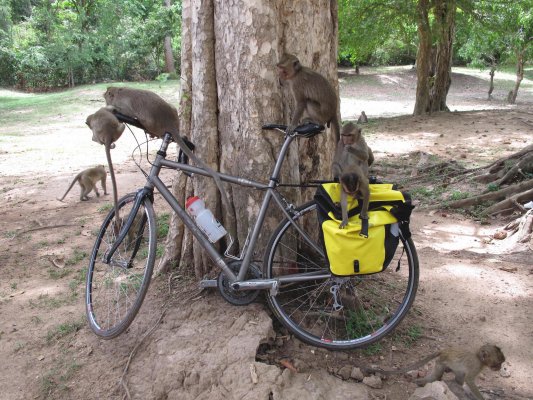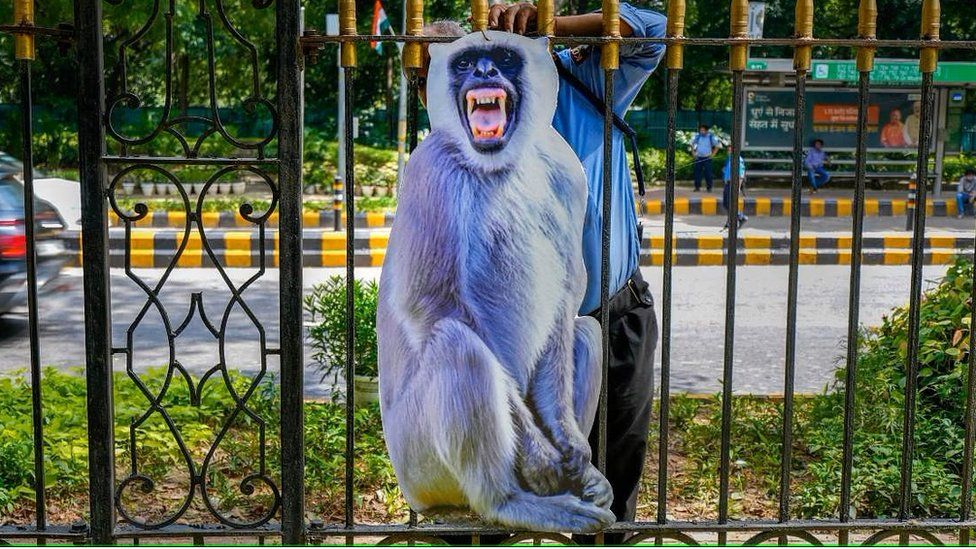Will the monkeys be fooled?
IMAGE SOURCE, PTI Image caption, Huge cut-outs of langur monkeys have been installed in Delhi
Authorities in India's capital, Delhi, are taking steps to scare away monkeys from venues linked to the G20 summit.
Life-size cut-outs of grey langur monkeys - which scare smaller monkeys - have been put up at various places and there are plans to deploy people trained to mimic the animal's sounds.
Delhi has a huge monkey population and authorities hope these steps will keep the animals from disrupting the summit.
India will host the meeting of G20 leaders on 9 and 10 September.
Langurs are an aggressive type of monkey with long tails and dark faces. They are typically controlled on leads by specially trained handlers, who release them once other monkeys are seen.
A senior official told PTI news agency that langur cut-outs were being placed in areas heavily infested with monkeys.
Satish Upadhyay said that 30-40 trained people who can mimic sounds made by langurs will be deployed at hotels where delegates are set to stay, as well as in places where monkey sightings are reported.
Authorities are also making arrangements to provide food for monkeys in designated sites, aiming to discourage them from lingering in search of food.
On previous occasions too - including the 2010 Commonwealth Games - authorities in Delhi have tried to scare away monkeys with the help of real langurs or people who can mimic them.
In 2014, authorities hired 40 professional langur impersonators to scare away monkeys from the parliament and other government buildings in the capital.
Parliament authorities had earlier used real langurs for the same purpose, but stopped after animal rights activists said holding monkeys captive amounted to cruelty.
https://www.bbc.com/news/av/world-asia-66655801



